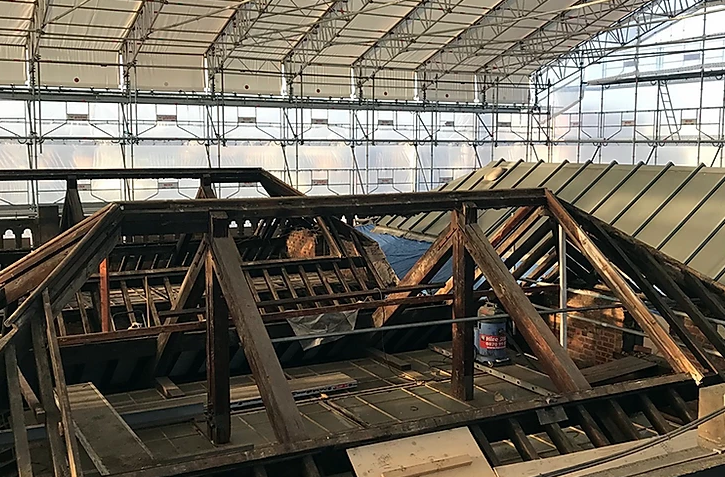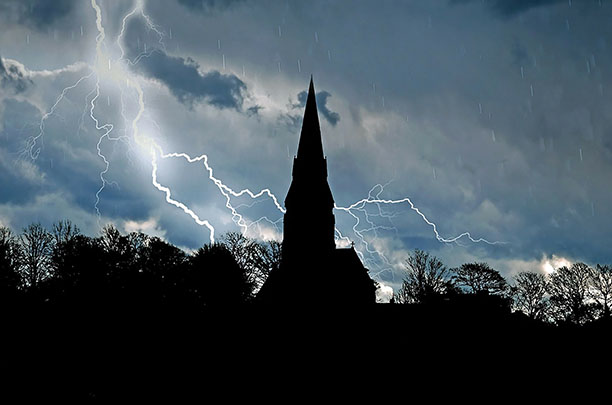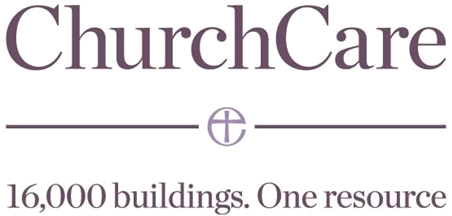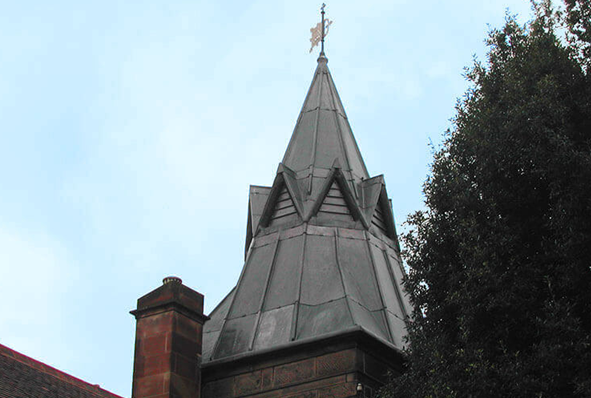Heritage Roofing
Heritage roofing - maintaining our iconic buildings
The UK is home to some of the most iconic buildings in the world, from stunning churches and cathedrals to historic stately homes. Each and every one of these remarkable feats of architecture requires regular maintenance to ensure they remain in the very best condition, allowing them to be enjoyed for generations.
Lightning Protection
When lightning strikes are you protected against this act of God?
The issue of lightning protection in churches is one that has exercised this publication for many years. In this four-part series of spotlights on the issue we will be revisiting various aspects of the subject, beginning with an overview of current thinking.
Traditional Lime
Lime: it’s better for buildings – and for the environment
It is now fairly well known that cement is not good for old buildings and that lime mortar should be used. But why? What are the advantages and what are the disadvantages? In order to begin to answer those questions it is necessary to understand the nature of traditional building, the process by which buildings used to be built, and how it differs from modern construction, the process by which we build today.
Audio Visual
Audio visual equipment in church buildings
This guidance is issued by the Church Buildings Council under section 55(1)(d) of the Dioceses, Mission and Pastoral Measure 2007. As it is statutory guidance, it must be considered with great care. The standards of good practice set out in the guidance should not be departed from unless the departure is justified by reasons that are spelled out clearly, logically and convincingly.
Read More...
CRE Events
All change at CRE: the UK’s ‘ideal church show’
The Christian Resources Exhibition (CRE), the UK’s largest church-related show, has changed hands in its 40th year and has been taken over by Quartz Business Media.
Insurance
You need to ensure that reasonable precautions are in place at your church to keep it safe for those who use it. To do this, you need to think about what might cause harm to people.
You will then need to decide if the precautions already in place are adequate. If they are not, you may need to identify further action to prevent any danger. When done formally, this is known as a risk assessment.
LPOW Grants
£23 million government package to support restoration of thousands of listed places of worship
Heritage Minister Sir Chris Bryant has announced that the Listed Places of Worship Grant Scheme will be extended into the next financial year, providing £23 million so that thousands of historical buildings, including churches, synagogues, mosques and temples, can carry out restoration work.
Lead Roofing
Lead is one of the oldest materials in the roofing industry and is still commonly used throughout the world today.
Lead roofing is a traditional roofing method which has been used in the industry for hundreds of years, and is therefore proven to be extremely reliable. Lead roofing, and sand-cast lead, in particular is ideal for old buildings such as churches or historical renovations, whereas milled lead roofing is a mass-produced alternative, used for precision and accuracy in homes and commercial buildings alike.
Home
MAJOR AERIAL PHOTO COLLECTION TO BE CONSERVED AND MADE AVAILABLE ONLINE
English Heritage is delighted that the Heritage Lottery Fund (HLF) has agreed to support the conservation and digitisation of one of the earliest and most significant collections of oblique aerial photography of the United Kingdom with a grant of £1,755,772.This generous grant will help English Heritage and the Royal Commissions on the Ancient and Historical Monuments for Scotland and Wales to undertake a four-year conservation programme on the oldest and most valuable photographs in the historic Aerofilms Collection and to make them freely available online.
The Aerofilms Collection, acquired for the nation in 2007, is a unique and important archive of over 1 million aerial photographs taken between 1919 and 2006 which show the changing face of Britain during the twentieth century.
NEW WEBSITE TO BE LAUNCHED IN 2011
The four-year programme will start in 2011, and will give the general public the chance to share information and memories related to the images. Fragile negatives will be conserved and scanned into digital format, and a new website, Britain from Above, will be launched at the end of 2011. By the end of the project, in 2014, there will be 95,000 images taken between 1919 and 1953 available online.




















